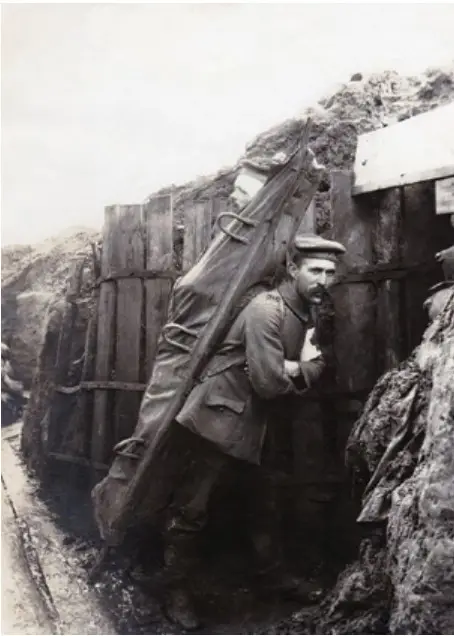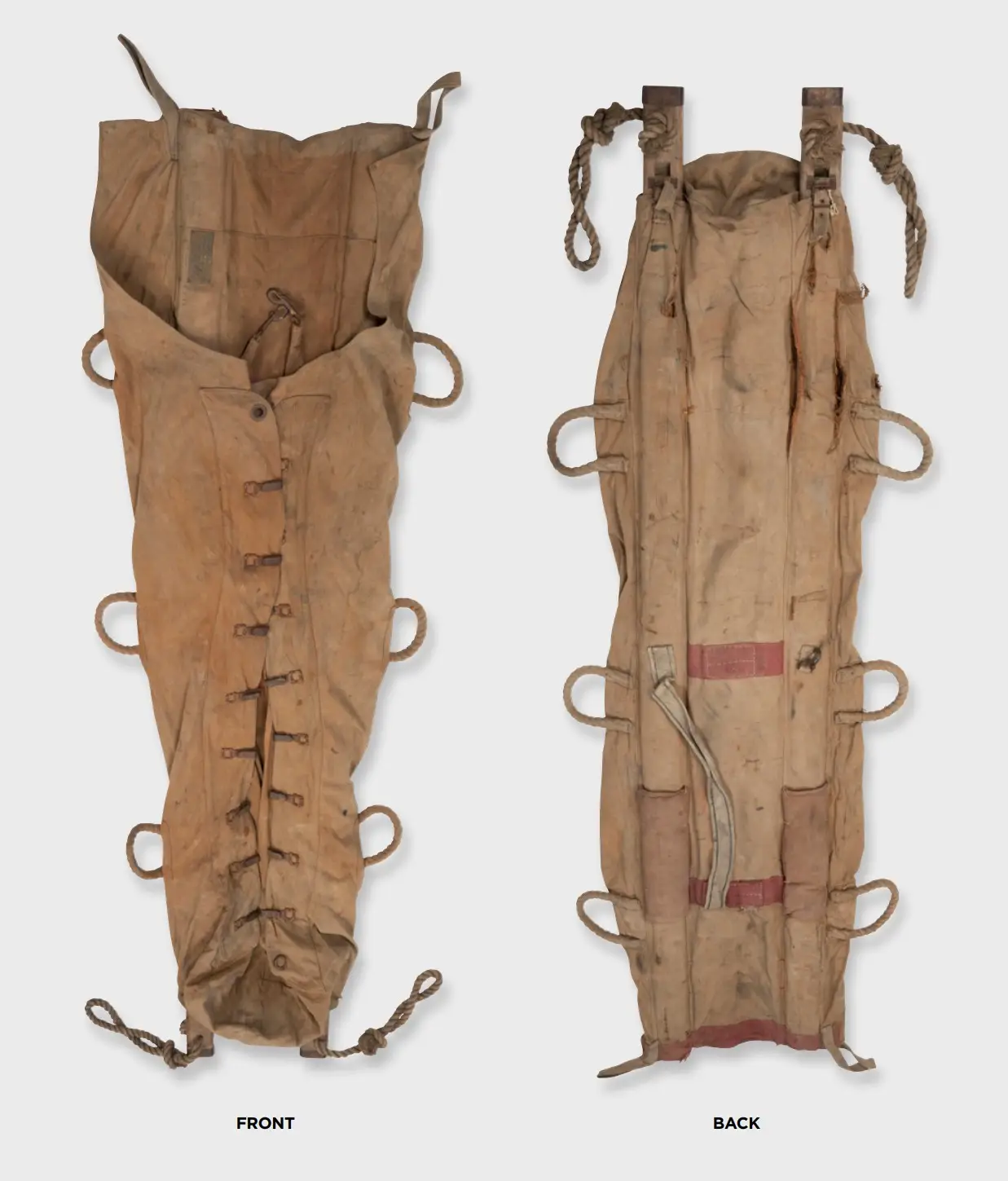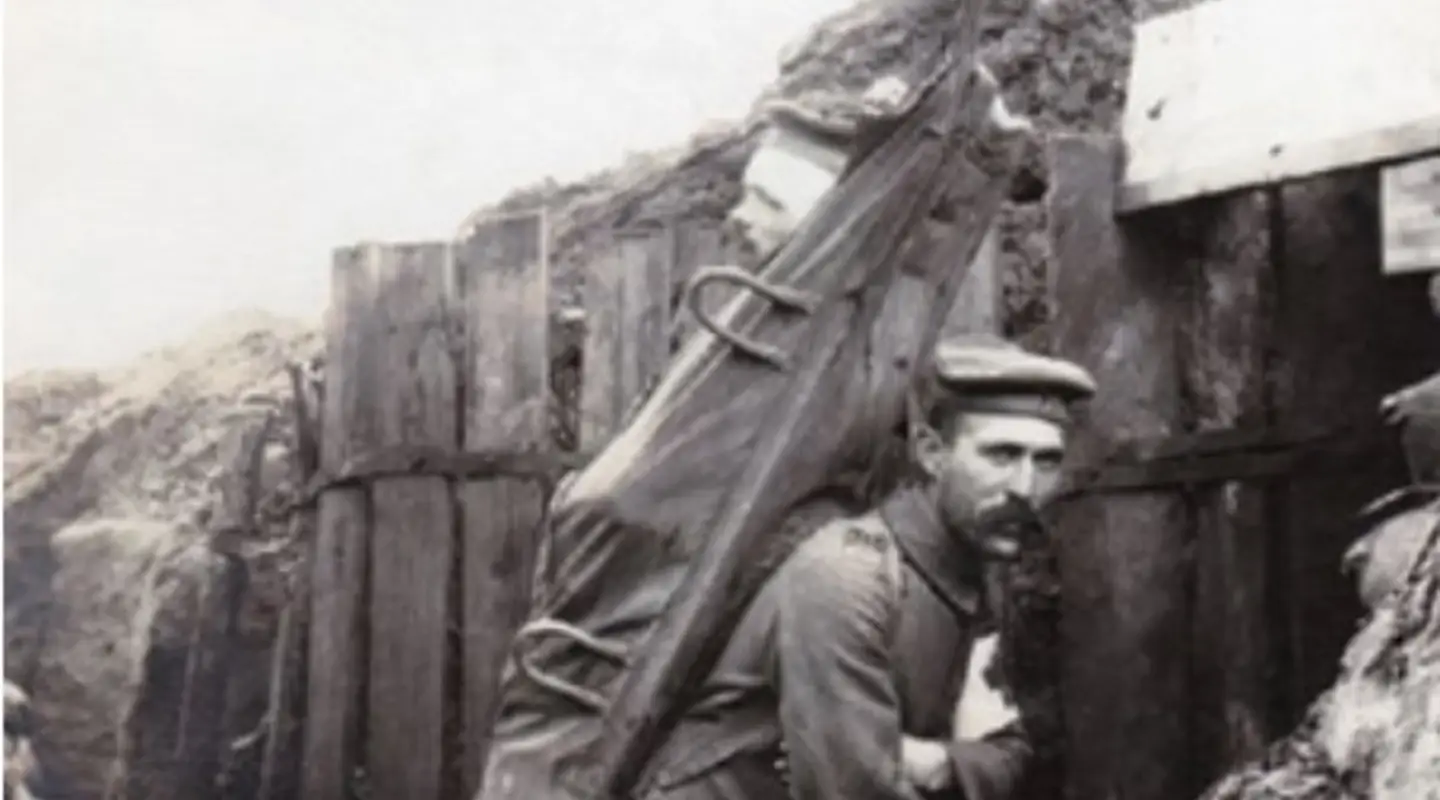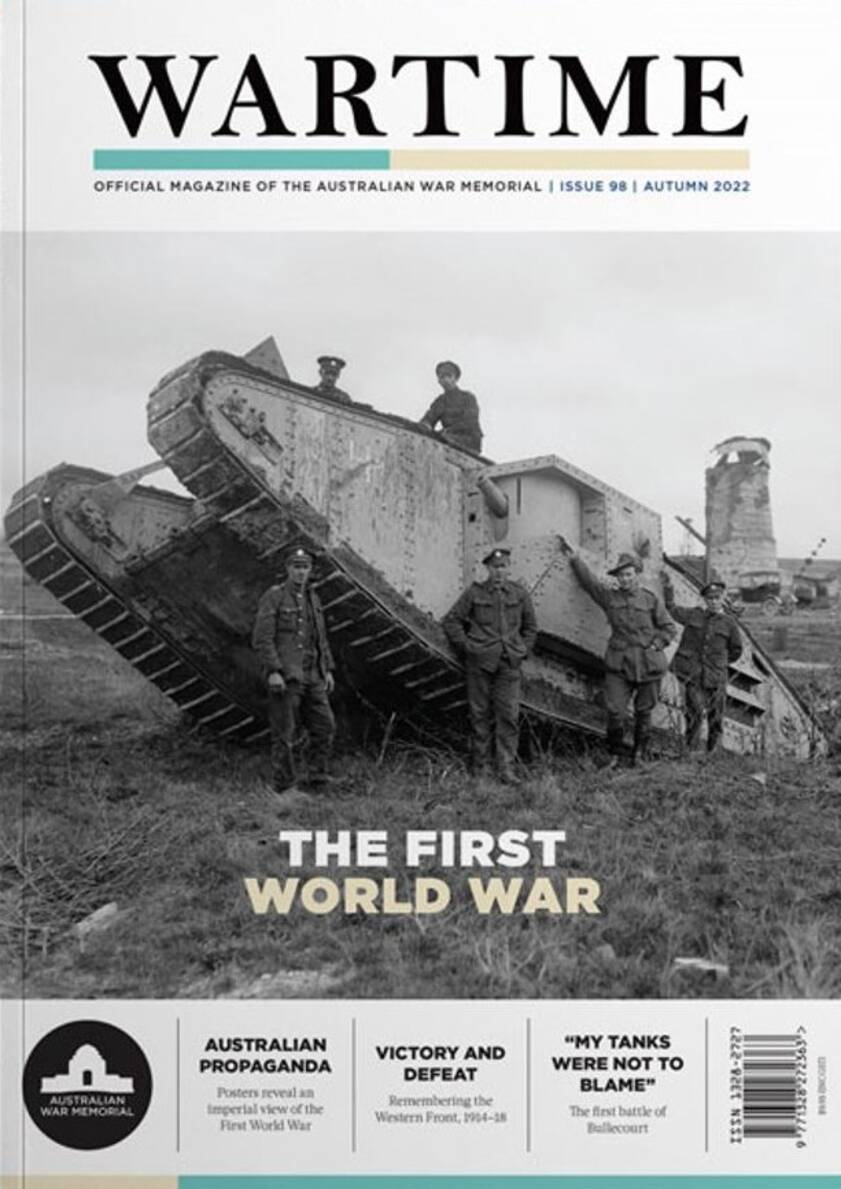On a pallet at the Memorial’s Treloar Technology Centre is a very rare stretcher.
It is a German First World War stretcher designed to be carried through trenches on the back of a single bearer.
The Memorial, and the military museums of Europe and North America, have many First World War stretchers in their collections. Some are designed to be dragged behind horses, others carried on camels; there are stretchers to be loaded onto motorcycle sidecars, ships or railway trolleys; others are a simple blanket and pole arrangement. Some bear the marks of violence; some are stained with blood.

A German stretcher bearer carrying a patient to an Aid Post. The stretcher is nearly identical to the one held by the Memorial.
Stretchers of the First World War were many and varied. Though different in design and material, they typically share two features: they were made to remove the wounded and dead from the battlefield, and they were always carried by two or more bearers.
The Memorial has contacted 18 of the world’s major war museums and collecting institutions: in Britain, France, Germany, Belgium, Canada, the United States and New Zealand. None had a stretcher like this one. That is not to say there are no other examples elsewhere; simply that there are no known surviving specimens in those institutions.
The Memorial’s stretcher is made of flexible canvas, supported longitudinally by two wooden planks. It has a closable, double-flap canvas body to encompass the patient. The ‘feet’ end of the stretcher is sewn into a bag-like pocket. This is a stretcher that secures and cocoons the patient.
On the underside are the remnants of two shoulder straps (one has been torn off) in dirty white cotton webbing. Sewn to an inner flap is a printed fabric square of writing in Gothic script. This small square of text is the User Manual and the key to the stretcher’s various applications. It describes how to carry a patient with no lower limb injuries: “In narrow passages, two men carry the stretcher horizontally. In angled or zigzag passages, the stretcher is carried upright, slowly and carefully by a single carrier on his back, using the shoulder straps.”
This stretcher was collected by three men of the 20th Battalion for a proposed 20th Battalion museum. They were Privates William Wise and Bailey Kent, and Sergeant Walter Brown VC DCM. The men of the 20th Battalion were quite the collectors. They captured many objects that came to our collection. German identity discs, helmets and water bottles; a klaxon, signboards, weapons and tools. Happily, they even souvenired a German moustache-trainer.

Camel coloured flexible canvas stretcher supported by two wooden planks. Carrying a wounded man upright on a wood and canvas frame would have been possible only for
short distances, and solely on solid ground – not common on the Western Front.


